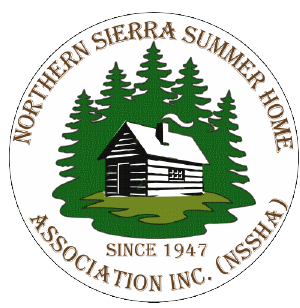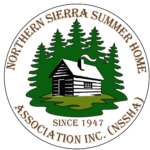Mountain History
For All of Us
History along the El Dorado
Johnson’s Pass
Over 150 years ago, John Calhoun “Cockeyed” Johnson explored and opened the trans-Sierra pass, which today
bears his name. The Johnson Cutoff Route was preceded by other routes over the rugged, precipitous central Sierra Nevada. Some emigrants came in search of gold; others were commissioned by the government for the purpose of exploration. In the 1840’s the summits were traversed in now familiar places like Donner Summit and Carson Pass by well known trail blazers like John C. Fremont and Kit Carson. In 1850, John C. Johnson located a circuitous but passable route that meandered from Carson Valley (Nevada) through the Lake Tahoe Basin before making its steep, switchback ascent up to the rim of the jagged Sierra now known as Echo Summit. Sources: “Opening the Johnson Cutoff” by Dana Supernowicz, Overland Journal,1996 – “History of El Dorado Co” by Paolo Sioli, 1883.
New release: “A Lovely & Comfortable Heritage Lost” by Ellen Osborn, 2015 (available through Amazon and at the Placerville Museum)
Audrain Station
In the spring of 1860, Thomas Hart Benton Audrain – who came to California seeking gold after serving during the Mexican War – built a way station near Johnson’s Pass (today’s Echo Summit). During the winter of 1864-65, his $17,000 “oversized” barn was crushed under the weight of the snow. Later that year, his station burned. Legend has it that when he received word via his telegraph machine installed at his station that President Lincoln has been shot. He announced, “Hooray, they’ve killed Abraham Lincoln. The dirty — should have been shot long ago”. Several men were at the station at the time. One of them rose slowly and said, “That kind of talk calls for hanging.” Another of them said, “I’ve got a better idea”. They then set fire to the station and after it had burned completely to the ground they told Audrain that if he ever set foot around there again he would be strung up to a tree. In the early 1900’s Zack Darrington ran a store on that location, calling it Audrain’s Lodge. He had that business until the early 1930’s.
Sources: “Fredricksburg Cemetery” by Karen Dustman, 2014 – “Saga of Lake Tahoe” by E. B. Scott, 1957.
Phillips
In 1859 Joseph Wells Davis Phillips bought 160 acres of land along what is now highway 50 in the area known as Phillips. It was a major stop for weary travelers with excellent pasture for the exhausted cattle pushing up over the mountain pass. Joseph built a 2 1/2 story way station and 5 barns to accomodate the many sojourners. In 1876 the station burned. The other buildings remained. In 1911 a second hotel was built but was also destroyed by fire a year later. Later, cabins were built in the area for guests. After the stock market crash of 1929, parcels of land were sold – that is now known as Phillips Tract. Of the original 160 acres, over 100 still remain in the family today. The log cabin belonging to the descendants still stands along the highway. Sources: Recollections from Louise Mehetable Day (great granddaughter of Phillips), 1992 – “Saga of Lake Tahoe” by E. B. Scott – “History of El Dorado” by Paolo Sioli, 1883 – “I Remember” by Betty Yohalem, 1976. New release: “Write If You Live to Get There” by Mary Jo Sonntag, 2013 (available through Amazon and at the Placerville Museum)
Tamarack Flat
Located about 45 miles east of Placerville, this section of private land was heavily used during the gold and silver rushes that carried travelers of all pursuits along this stretch of mountain terrain. In the 1860’s, toll roads were common. Along this Flat,George W. Swan obtained a preemption from the government to charge a toll to everyone who traveled over this section of road. He also received a land patent for the area. He later built a toll house – a large, two story rough-hewn log building with about 12 rooms – as well as other out buildings and corrals. This became known as Swan’s Upper Toll House – because it was located on the “upper” portion of the American River. Later, a “lower” toll house was built about two miles down the river at Twin Bridges.
Source: “Tamarack Flat 1844 – 1996” by Al & Mary Babyco
Strawberry
In the early 1850’s, Irad Berry – who was from upstate New York – came to California on one of the many wagon
trains headed west seeking fortune and a new life. He built the first lodge in 1858 – a popular way station on the
heavily traveled wagon road from old Hangtown to the mines in Nevada. Folklore goes that Berry sold straw that
was used to stuff mattresses as hay to the cattle owners. After a while the drovers got wise to his sham and
mused: “Got any straw, Berry?”. The lodge was taken over by Charlie Watson – a well known stage driver of the
time – in 1865. Unfortunately, it burned down two years later. Charlie immediately built another lodge. When the transcontinental railroad was completed in 1869, the highway trade dropped off and the lodge struggled over the years until new owners, the Scherrer family, bought it in 1919. They added a swimming pool, dance hall and
cabins. Business was up and down for them as well. In 1939, Fred Baumhoff, bought the the property and built
the lodge still standing today. To read more about Strawberry, click HERE
Sciots Tract
Pronounced “sigh – ots” – In the early 1900’s this masonic group decided to head up into the mountains looking
for a retreat from the summer Sacramento heat. Driving along highway 50, they spotted Pyramid Peak and since
the name of their lodge was Sacramento Pyramid #3, they took it as an omen that they had found the right place.
In 1921 they began construction on the “clubhouse” – still standing today (2009) – although it has required regular
maintainance over the years. This 22 acres of land is leased from the Forest Service and cabin owners must obtain
a 20 year permit to keep their cabins on government land. The cabin owner is required to keep the property clean of debris and painted a Forest Service approved color – these and other rules are subject to change and must be followed in order to keep their cabin. Masons from not only Sacramento but the Bay Area came up to help with the construction of other structures like the bridge, roads and cabins. There was a public campground where guests could pitch their tents and stay for a day, weekend or a month. Some cabin owners stayed all summer. During 1930’s and 1940’s it was common to see trucks driving into camp selling fresh fruits & vegetables, meat, dairy and bread. At this time, the camp had it’s own generator – each cabin was allowed one 25 watt light. If one of the ladies used a curling iron, the whole camp would lose power for three days until the generator got re-charged.
Source: “Sciots Tract – The First 75 Years” by Bob & Bev Monti, 1996
Wrights Lake
and it’s neighbor Dark Lake are located on the western slope of the Sierra Nevada 8 miles off Highway 50 on the edge of the Desolation Wilderness. Most of the historic cabins around these lakes were built back in the 1920’s. Many are still owned by third generation families. The cabin owners today still maintain a power line free existence. There are no electric or phone lines going back into the Wright’s Lake area. All the cabins use propane, kerosene and wood for heat, running appliances and light. Because of it’s elevation – almost 7,000 feet – access is limited to a few months in the summer. If the winter has dropped alot of snow, sometimes cabin owners can’t get in until the first of July. After the winter of 1997, a landslide closed the road for two years. Cabin owners had to go in through a rough secondary “Jeep” trail via Georgetown. A great source about the history of the area is: “The Wright’s Lake Story” by the Wrights Lake Summer Home Association, 1994; available at the Placerville Museum.
Pollock Pines
The community of Pollock Pines is located about 16 miles east of Placerville. In the early 1900’s Hiram Robert Pollock moved to this heavily timbered area from Michigan, bought 240 acres and operated a lumber mill. On some of the acreage he developed a subdivision of homes. As businesses, churches and schools were later built, it became known as Pollock Pines. Nearby is Sly Park, named for James Calvin Sly – a Mormon traveler crossing the Sierra in the 1840’s. This natural meadow – first used by the native Maidu and Miwok people – was a great grazing area for early travelers. In the early 1900’s the El Dorado Irrigation District constructed a dam on the creek that ran through the area that is now known as Jenkinson Lake – named for Walter E. Jenkinson, Secretary/Manager for the district. Source: “The Pollock Pines Epic” by Marilyn Parker, 1995 Click HERE to visit their website
Pony Express
“WANTED – Young, wiry fellows not over 18. Must be expert riders, willing to risk death daily. Orphans preferred.
Wages – $25 per week.” Such was the advertisement for mail carriers for the short-lived but long remembered
Pony Express that existed from April, 1860 to October, 1861. This service, started by transportation pioneers
William H. Russell, Alexander Majors and William B. Waddell, ran from St. Joseph, Missouri to Sacramento, CA.
The ride took 10 days – cutting in half the time it took to carry mail by stage coach. Each rider rode about 75 miles
a day – changing horses every 10 to 15 miles. They carried the mail in a “mochilla” – a leather cover that draped over the saddle with four pouches for carrying the mail. Each rider took less than two minutes to dismount with the mochilla, throw it over the saddle of the fresh horse and remount for the next leg of his run. Today, the National Pony Express Association sponsors the Re-Ride. This event attracts Pony Express enthusiasts from all over the United States (and even Europe). Each rider signs up to carry the mail for a portion of the original trail – about 3 miles – and
use their own horses. This re-enactment runs in opposite directions every other year. For more information, contact: the National Pony Express Association, P. O. Box 236, Pollock Pines, CA 95726 or go on their website at: National Pony Express Association. Sources: NPEA, “The Saga of the Pony Express”, US Postal Service, 1983; “Story of the Pony Express”, Mt. Democrat, Apr. 17, 2000.
Wagon Train
This re-enactment of the early pioneers travels each June along Highway 50 from Friday’s Station (Stateline, NV) to Placerville, CA. Since the 1840’s, restless US citizens as well as travelers from around the world made the sometimes dangerous trek of roughly 2000 miles from Missouri to California. Although there were many routes to the west, the route over Johnson’s Pass has been kept alive by this organization. Wagon trains used to be about a mile long – they are now a few wagons but those who participate are enthusiastic about keeping this part of history alive.For more information visit: www.hwy50wagontrain.com.



